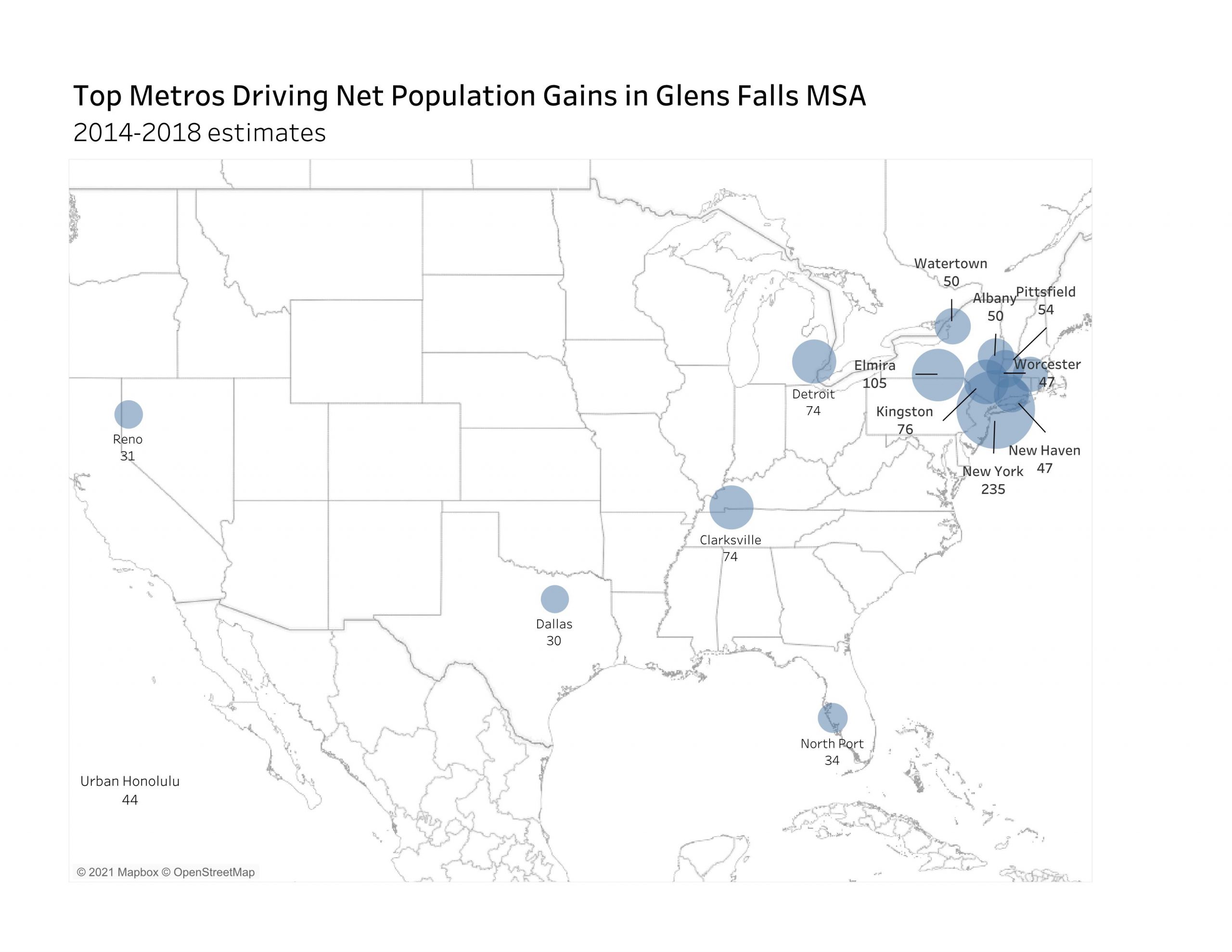The Metros where the Capital Region is Winning and Losing on Talent Attraction
Before COVID-19 triggered mass movements away from major urban tech hubs, the Albany-Schenectady-Troy metropolitan statistical area (MSA) was already attracting many more people from major tech metros such as New York City, Phoenix, San Francisco and San Jose than they were attracting from it, according to a Center for Economic Growth (CEG) analysis of U.S. Census Bureau five-year estimates of metro-to-metro migration flows.
Between 2014 and 2018, an average 29,421 people migrated to the Albany-Schenectady-Troy MSA from other metro areas,1 but 29,156 people also migrated to other metros from the Albany-Schenectady-Troy MSA. That meant the metro-to-metro migration total was 58,577. However, there are very slim margins in regard to net population gains and losses. Amid all those people moving between metros, the Albany-Schenectady-Troy MSA’s net population gain was 265.

Gross Migration
Among several of metros with which the Albany-Schenectady-Troy MSA has substantial gross migration volumes, net gains and losses were marginal. For example, the Albany and Boston-Cambridge-Newton metro areas shared a gross migration of 2,756, but the former’s net loss was 90 people. Similarly, Albany’s gross migration with Syracuse was 1,557, but its net gain from the Central New York metro was 47. One major exception was the New York-Newark-Jersey City MSA, which shared with the Albany metro a gross migration 15,401. However, the Albany metro’s net gain from the New York MSA was 4,623.

Top Migration Metros
The metros from which the Albany MSA had the largest net population gains were New York-Newark-Jersey City (4,623), Charleston-North Charleston (792) and Phoenix-Mesa-Scottsdale (477). However, the Charleston migration was likely related the movement of Navy trainees between South Carolina naval bases and the Naval Nuclear Propulsion Program at the Kenneth A. Kesselring Site in West Milton. Among other major tech hubs, the Albany metro received a net population gain from the San Francisco-Oakland-Hayward MSA (121), San Jose-Sunnyvale-Santa Clara MSA (107) and Cincinnati MSA (93). The metros with which Albany had the greatest net loss were the Charlotte-Concord-Gastonia MSA (-588), Washington-Arlington-Alexandria MSA (-425) and Virginia Beach-Norfolk-Newport News MSA (-364).
Glens Falls MSA
The Glens Falls MSA, which includes Warren and Washington counties, had the largest net population gains with New York-Newark-Jersey City MSA (235), Elmira MSA (105) and Kingston MSA (76). Outside New York State, its largest net gains came from the Clarksville MSA in Tennessee (74), the Detroit-Warren-Dearborn MSA (74) and the Pittsfield MSA (54). The metros with which the Glens Falls MSA had the greatest net loss were the Rochester MSA (-156) and Burlington-South Burlington MSA (-88).

CEG Initiatives
To and attract more people to the area, CEG is partnering with business and community leaders, to launch a talent attraction campaign to raise the Capital Region’s profile as a 1-million-strong metro region with distinct competitive advantages, including strategic location, educational assets, cultural vibrancy, innovation, recreational opportunities, affordability and livability.
Don’t miss these insights into the trends that are shaping the Capital Region’s economy. Sign up for CEG’s e-news and follow us on:













